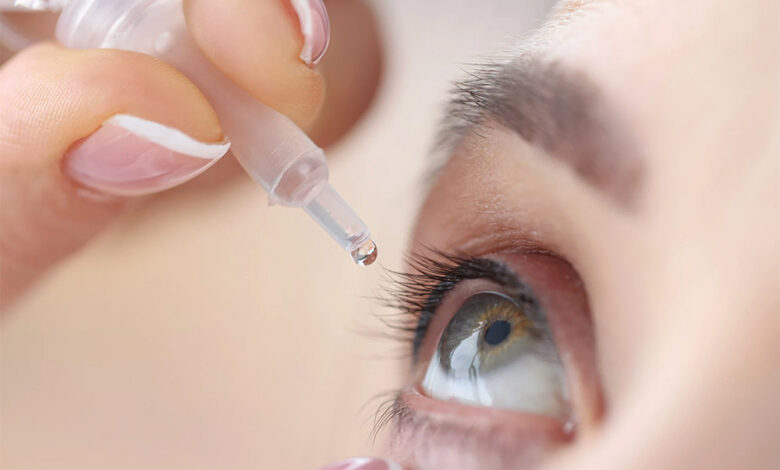
In most people their eyes gradually lose the ability to focus on nearby objects as they age, with the condition usually beginning in the early 40s and continuing to worsen over the years. The condition is known in medical terms as presbyopia, and in more common parlance as ‘long-sight’ or long-sightedness. Early signs of presbyopia include the person having to hold reading material farther away than usual to make the letters and words clearer; blurred vision at normal reading distance; eyestrain or headaches from reading or doing close-up work for an extended period, especially when tired, or in dim lighting conditions.
Presbyopia is generally corrected through the use of prescription eyeglasses, contact lenses, or surgery. But these solutions have limitations, including being inconvenient, causing physical and social discomfort, and carrying the potential risks of infections arising from improper use of contact lens, or complications following surgeries.
The significant unmet medical needs in presbyopia management led researchers at Advanced Research for Presbyopia, in Buenos Aires, Argentina, to offer a non-invasive, convenient and effective pharmacological alternative in the form of eye drops. In initial trials, the eye-drops, applied two to three times daily, were seen to significantly restore near-vision lost to aging. In some cases, sight improved within an hour of applying the drops, and the restored sight was sustained for years, with minimal side-effects.
The newly developed eyedrops contain a combination of two active agents: pilocarpine, a drug that constricts the pupils and contracts the ciliary muscle, which is a muscle controlling the eye’s accommodation for seeing objects at varying distances, and diclofenac, a non-steroidal anti-inflammatory drug (NSAID) that reduces inflammation and the discomfort that pilocarpine often causes.
The study included 766 patients—373 women and 393 men, with an average age of 55—who were divided into three groups to receive one of three eye-drop formulations. Each group received a formulation that had a fixed dose of diclofenac but with the concentration of pilocarpine varying from 1, 2, and 3 percent respectively.
The specially formulated eye-drops were administered twice a day, usually on waking and again approximately six hours later, with an optional third dose if symptoms recurred or additional visual comfort was needed. The researchers assessed sight improvement by measuring how well patients could read the Jaeger chart—the standard chart used for testing uncorrected near visual acuity (without reading-glasses)—one hour after the first administration of the drops. The visual acuity of the patients continued to be monitored for two years.
The results showed that nearly all patients experienced positive improvements in near visual acuity, although the magnitude of the improvement depended on the status of their vision before treatment at baseline.The results also showed rapid and sustained improvements in near vision for all three concentrations. One hour after having the first drops, patients had an average improvement of 3.45 Jaeger lines. The treatment also improved focus at all distances.
Impressively, 99 percent of 148 patients in the 1 percent pilocarpine group reached optimal near vision and were able to read two or more extra lines. Approximately 83 percent of all patients maintained good functional near vision at 12 months. Importantly, no significant adverse events like increased intraocular pressure or retinal detachment were observed. In the 2 percent group, 69 percent of 248 patients were able to read three or more extra lines on the Jaeger chart, and in the 3 percent group, 84 percent of 370 patients could read three or more extra lines.
The improvement in the patients’ vision was sustained for up to two years, with a median duration of 434 days. Adverse side effects were mild, with the most common being temporary dim vision, which occurred in 32 percent of cases; irritation when the drops were instilled (3.7%); and headache (3.8%). No patients discontinued the treatment.
The study revealed that optimal pilocarpine concentrations could be individualized depending on the baseline severity of presbyopia as assessed by the initial Jaeger scores. Patients with less severe presbyopia responded best to 1percent concentrations, while those with more advanced presbyopia required higher 2 percent or 3 percent concentrations to achieve significant visual improvement.
The results suggest this combination therapy offers a safe, effective, and well-tolerated alternative to traditional presbyopia management. It significantly reduces dependence on reading glasses, providing a convenient, non-invasive option for patients. However, the eye-drops do not eliminate the need for glasses in all individuals, and are not intended to replace surgical interventions, but rather to provide eye care professionals with an evidence-based pharmacological option that expands the spectrum of presbyopia care beyond glasses and surgery.
An evaluation of the study by iIndependent experts found the study to be robust based on the large number of patients involved and the long follow-up time. Moreover, it was the first systematic evaluation comparing three different pilocarpine concentrations in combination with diclofenac. But the evaluators also highlighted the limitations of the study.
They pointed out that the study was based on a single center and that it was a retrospective study—which analyzes existing data from the past to understand outcomes, risks, or associations related to a disease or event. Long-term pilocarpine use has also been associated with side-effects such as red-eyes, eye-stain, irritation, reduced low-light and night vision, and, in rare cases, retinal detachment. Prolonged topical NSAID use may also pose corneal risks.
Warning that the limitations observed introduces selection bias and prevents the generalizing of the results over a wider population, the experts called for broader, long-term, multi-center studies to be conducted so as to confirm safety and effectiveness of the eye-drops before the treatment could be widely recommended.












